While traveling in Newfoundland and Nova Scotia with my 9 year old daughter we visited three museums and a cemetery so that she could learn more about the sinking of the Titanic.
In April 1912 the White Star Line’s RMS Titanic departed on its maiden voyage from Southampton, U.K. bound for New York City carrying 2,224 passengers and crew. The launching of the world’s largest and must luxurious ocean liner was celebrated on both sides of the ocean but just a few days later the Titanic struck an iceberg off the coast of Newfoundland and sank in what was one of the deadliest peacetime maritime disasters in modern history.
The Titanic Story
Early in the 20th century, competition was heating up between two large shipping companies, Cunard and the White Star Line. In 1906, Cunard had launched two ships which could cross the ocean in 5 days and were becoming wildly popular passenger liners.
In an attempt to best Cunard, the White Star Line decided to build ships that would be the largest and most luxurious in the world. The first of these ships was The Titanic which was as long as three football fields, 11 stories high and could carry more than 2,500 passengers. The Titanic was like a floating palace that the press soon took to describing as “unsinkable”.
The Titanic set sail from the port of Southampton in the United Kingdom on April 10, 1912 bound for New York City with stops scheduled in Cherbourg, France and in Queenstown (now Cobh) in Ireland. The captain of the ship was Edward Smith who had been with the White Star Line for more than 40 years.
The Chairman of White Star, J. Bruce Ismay, was on board for the historic voyage and among the passengers were some of the wealthiest people in the world including John Jacob Astor IV and his wife, Benjamin Guggenheim, Macy’s owner Isador Straus and his wife, and millionairess Margaret “Molly” Brown. The ship also carried hundreds of immigrants traveling in third class on their way to America where they hoped to have a better life.
A combination of flawed decisions, arrogance and bad luck resulted in The Titanic striking an iceberg on April 14, 2012 at approximately 11:40pm. Tragically, there were only enough lifeboats on the ship to hold about half of the passengers on board and in the panic that ensued many of these were launched when they were only partially filled.
By 2:20am the ship foundered and sank into the sea and the passengers who hadn’t been able to get into lifeboats died of hypothermia within minutes of hitting the icy waters. More than 1,500 people lost their lives in the disaster.
In the aftermath of the sinking of The Titanic, public inquiries were held and a number of changes were made in maritime regulations to improve safety on the high seas. Ships are now required to have enough lifeboats to carry more than the number of passengers aboard, passenger ships are required to hold lifeboat drills, wireless equipment on ships must be manned around the clock, and an International Ice Patrol was established to monitor the presence of icebergs in the North Atlantic.
Our Interest in the Titanic
It may seem a bit unusual to say that I was planning visits to Titanic sites because my nine year old daughter wanted to see them but Emma has very eclectic interests and she had developed a fascination for the story this spring amidst the news coverage leading up to the 100th anniversary of the sinking. She read a few children’s books (Magic Tree House: Tonight on the Titanic; Magic Tree House Fact Checker: Titanic; and Canadian Flyer: SOS Titanic) about the disaster and wanted to know more so we agreed to see as many Titanic sites as we could on our east coast trip.
Each year at her school the students from grades 3 through 8 research, write and present a speech on the subject of their choosing. Emma had already decided prior to summer vacation that the Titanic would be an interesting subject for her grade 4 speech so she planned to conduct some research while on the east coast.
Titanic Sites in Newfoundland
As it was off the coast of Newfoundland that The Titanic struck an iceberg there will forever be a connection between the two. Before our east coast trip I had read that there would be a small Titanic exhibit in St. John’s and promised Emma that we would see it but I wasn’t aware until we had arrived in the city that there was a much more extensive exhibit at another location.
The Rooms Museum in St. John’s
The Rooms is a public cultural centre in the heart of the capital city of St. John’s encompassing a museum, an art gallery and the provincial archives in a striking building that provides a panoramic view over the city. Earlier in the summer I had learned that The Rooms would be hosting a small Titanic exhibit for a limited time so we had it on our itinerary as a must-see.
Outside Titanic: Relics of Disaster at The Rooms
The small exhibit, Titanic: Relics of a Disaster, explores Newfoundland’s connections to the disaster through artifacts, documents and images from the provincial archives. The exhibit featured distress messages received at the Cape Race wireless station as well as items recovered at sea including a life jacket from the ship. The life jacket on display was from the last Titanic body recovered following the disaster.
It only took a few minutes to browse the exhibit but Emma was impressed by what she saw and dutifully took research notes so that she wouldn’t forget any of the details.
Titanic lifejacket on exhibit at The Rooms, St. John’s
Johnson Geo Centre in St. John’s
We hadn’t been aware before arriving in St. John’s that the Johnson Geo Centre had a substantial Titanic exhibit but saw mention of it in a visitor’s guide and a friend of mine who lives in St. John’s also suggested that it would be worth a visit.
The Johnson Geo Centre is a science museum, located on Signal Hill in St. John’s, which focuses on geological history – including glaciers and icebergs. One of the popular exhibitions at the centre is The Titanic Story – a complete account of the disaster including information about the construction of the ship, the passengers, the course of events that led to hitting the iceberg and the aftermath of the disaster.
Outside Titanic exhibit at Johnson Geo Centre
The exhibit features large poster boards filled with information and photos about the Titanic and its fateful voyage.
Titanic exhibit – newsboy photo
It begins with historical information about the owners of White Star, why they wanted to build the world’s largest luxury passenger ship, and details about the construction of the ship.
The exhibit also shares a great deal of information about and photos of life on board the ship – describing and illustrating the public rooms and the accommodations for each class of passenger and crew members.
Visitors also learn more about the passengers who were on board the ship – the wealthy who were eager to participate in the historic voyage; the emigrants heading for a new life in North America; the casual crew members who signed up to work aboard the ship just a few hours before sailing; and the ship’s officers who carried out their duties til the bitter end.
Titanic exhibit – story boards and artifacts
There was so much information that we could have easily spent hours in this exhibit as Emma wanted to take notes about each of the boards. I took photos of quite a few of them but she felt like she needed to sit and write about the important details from time to time.
Taking notes at Titanic exhibit
The exhibit details the chain of events from the time that the ship left port until it struck the iceberg on April 14, 1912 at 11:40pm. Two hours and 40 minutes later the ship sank into the icy waters of the North Atlantic just 350 miles off the coast of Newfoundland.
The Titanic Story – The Final Plunge
The exhibit doesn’t shy away from analyzing the grim statistics from the disaster – how class determined who survived the shipwreck and the role that greed and pride played in the sinking of the Titanic.
The exhibit wraps up with copies of newspaper articles informing the world of the sinking of the ship that many had believed to be unsinkable.
Newspaper headlines reporting the sinking of the Titanic
The Centennial Titanic Exhibition at the Johnson GEO Centre also includes daily Titanic-themed movies, interactive kiosks, and tours for both adults and kids.
Titanic Sites in Nova Scotia
Nova Scotia also has a connection to the Titanic disaster as it was ships from Halifax that were dispatched in recovery efforts. Many of the bodies that were recovered were brought back to the city to be buried.
Maritime Museum of the Atlantic in Halifax
The Maritime Museum of the Atlantic in Halifax is the oldest and largest Maritime Museum in Canada and maintains exhibits relating to Nova Scotia’s marine history including the Battle of the Atlantic, the Halifax Explosion of 1917 and Nova Scotia’s role in the aftermath of the Titanic disaster.
When we visited there were temporary exhibits in place as part of the centennial commemoration in addition to the permanent exhibit The Unsinkable Ship and Halifax. This exhibit tells the story of the Titanic, the disaster, and the role that Halifax played in the aftermath when cable steamers, such as the Mackay-Bennett, were assigned the grim task of heading out to sea in an attempt to recover the bodies of the ship’s passengers who had perished in the sinking. The exhibit contains more than 50 objects – artifacts and historic photographs including a deck chair from the ship.
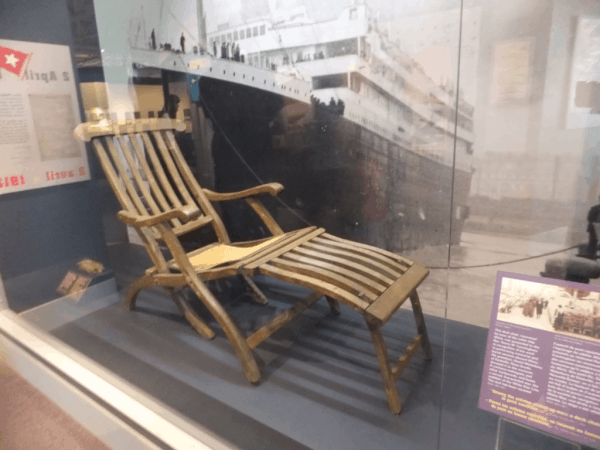
Deck chair from the Titanic
Examining the Titanic exhibits at the Maritime Museum of the Atlantic
The museum also has a replica of the deck chair that visitors can sit in and imagine what it would have been like sailing on the most luxurious ship of the time on what must have seemed like a grand adventure.
Replica deck chair from Titanic
Piece of carved wood from Titanic
There is also a life-size photo enlargement of the Titanic’s grand staircase which provides visitors with a sense of just how luxurious the ship was.
Life-size photo of the Titanic’s Grand Staircase
One of the most touching exhibits is a pair of children’s shoes that were kept in a drawer for decades by a police sergeant who had been guarding the recovered bodies. Clothing and shoes from the victims were to be burned in order to thwart souvenir hunters but the sergeant couldn’t bear to burn the tiny shoes and set them aside.
After his death, the shoes were donated to the museum and DNA testing later connected the shoes to the tiny victim referred to as The Unknown Child that lay buried in the Fairview Cemetery in Halifax. The child was identified as 19 month old Sidney Leslie Goodwin who perished along with his parents and five older siblings.
Unknown child’s shoes from wreckage of Titanic
Fairview Cemetery in Halifax
Fairview Cemetery in Halifax is one of three cemeteries in the city where victims of the Titanic disaster are buried.
The White Star Line paid for most of the gravestones which are simple granite markers with the name of the victim and the date of death. Nearly one-third of the markers are blank because the remains could not be identified. In some instances, families paid for more elaborate gravestones including a large Celtic Cross.
There is also a monument that was erected to mark the grave of The Unknown Child, recently identified as Sidney Leslie Goodwin, where visitors leave teddy bears and flowers. We also saw the grave marker for the final victim recovered whose life jacket we had seen on display in St. John’s.
Many fans of the movie, The Titanic, starring Leonardo DiCaprio stop to pay their respects at this simple gravestone marked with the name J. Dawson as Jack Dawson was the name of the character he played in the movie.
There is a great deal to be learned about The Titanic at these sites in Eastern Canada whether one is a history buff, has a casual interest in what happened or is a 9 year old intent on discovering everything there is to know about an ill-fated ship that set sail 100 years ago.
Related Articles
7 Family-Friendly Activities in Halifax
Lighthouses of Atlantic Canada

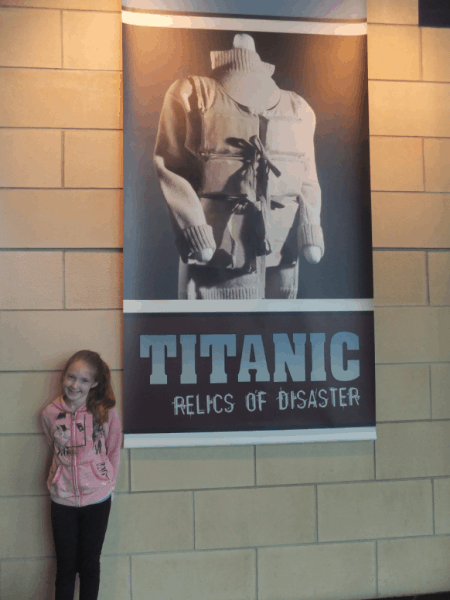
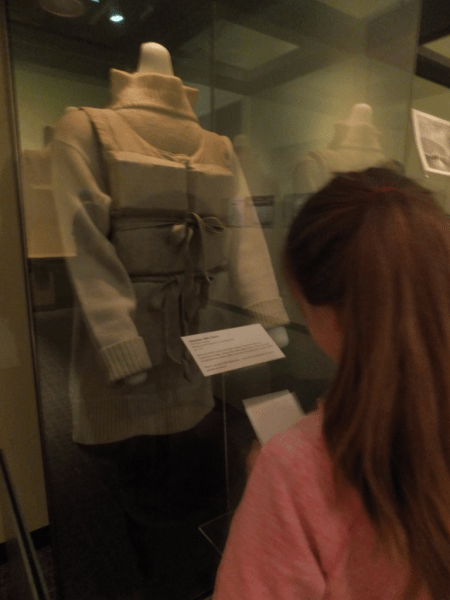
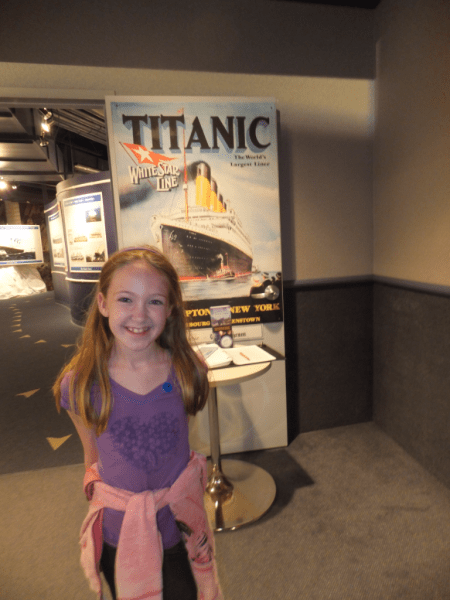
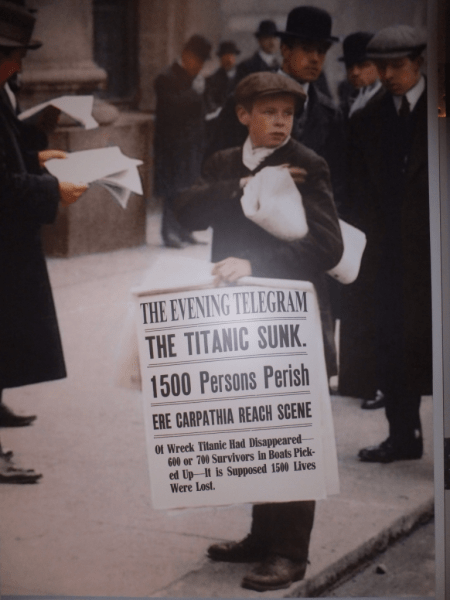
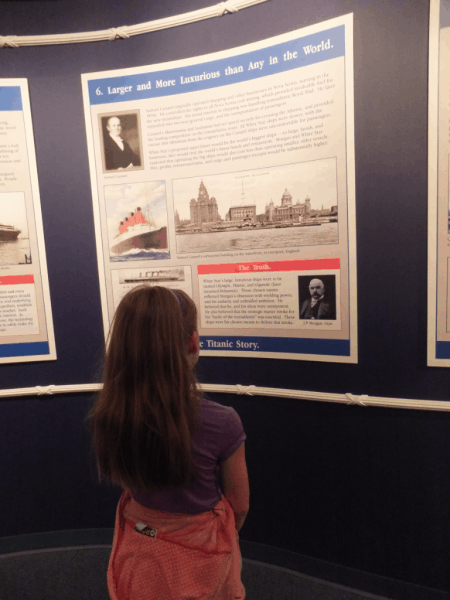
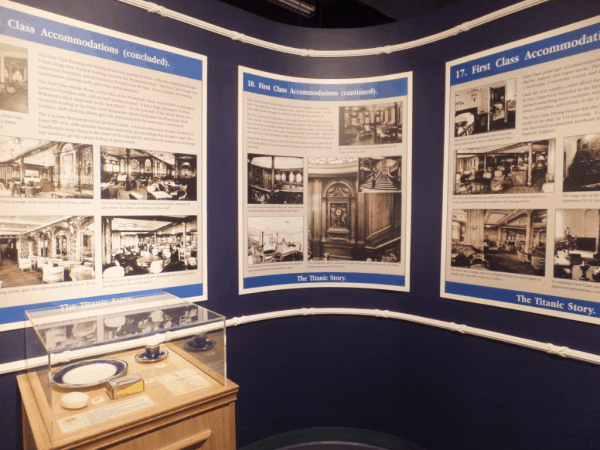
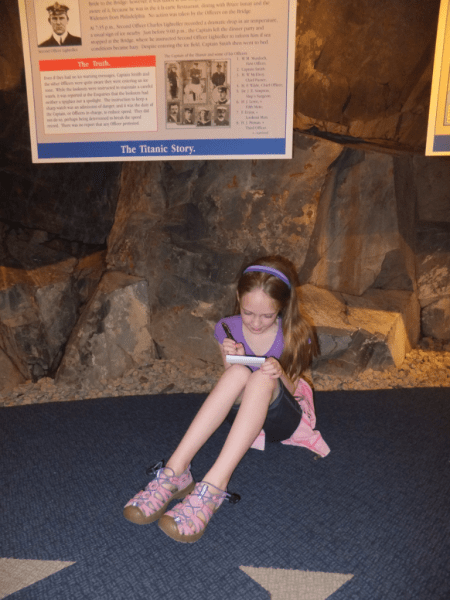
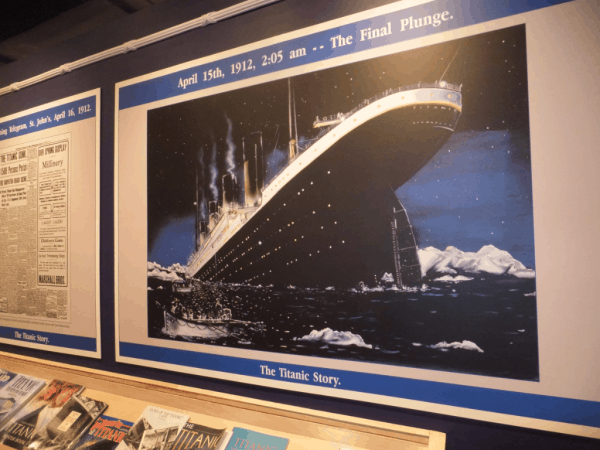
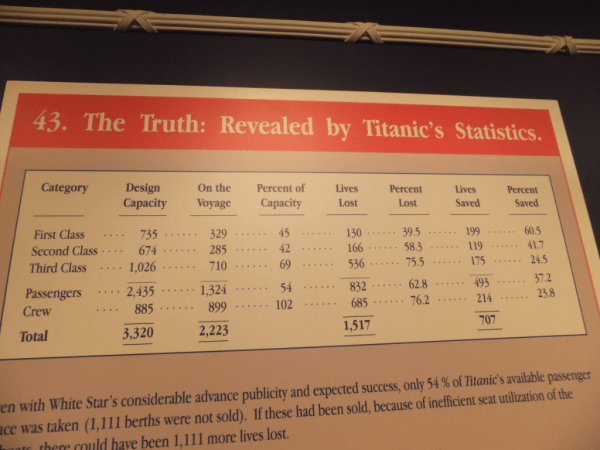

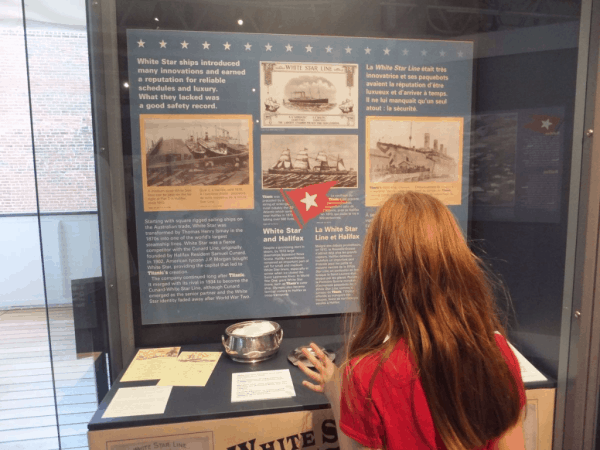
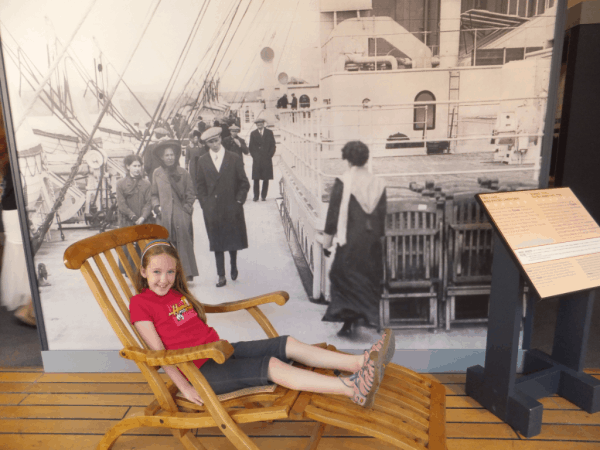
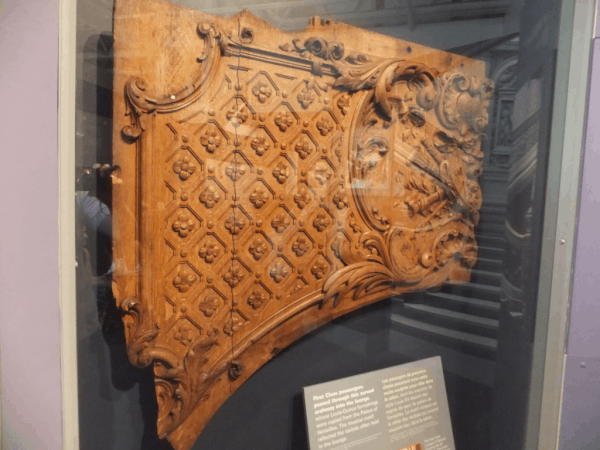
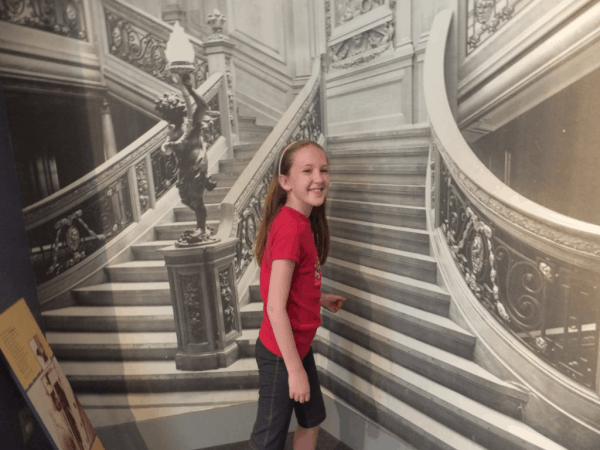
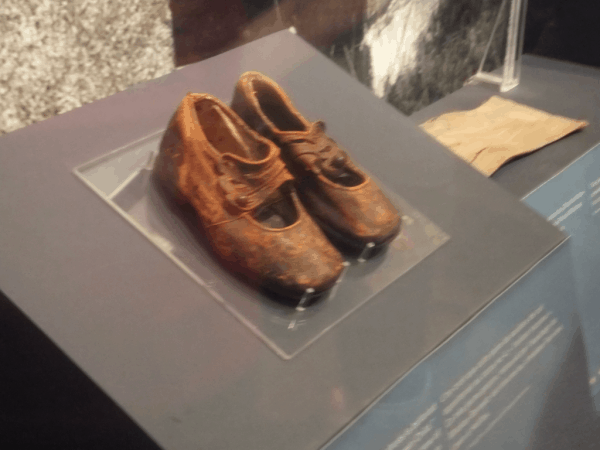
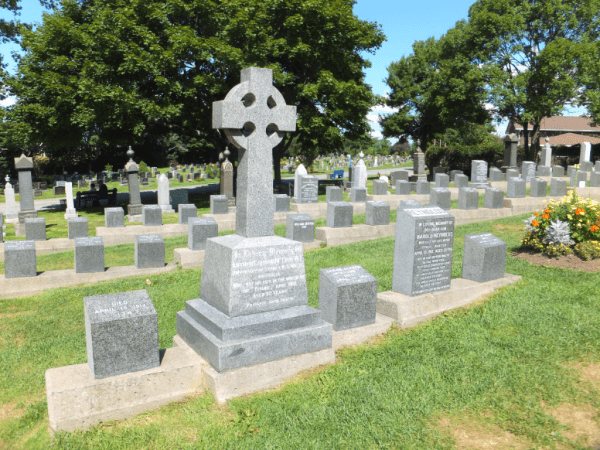
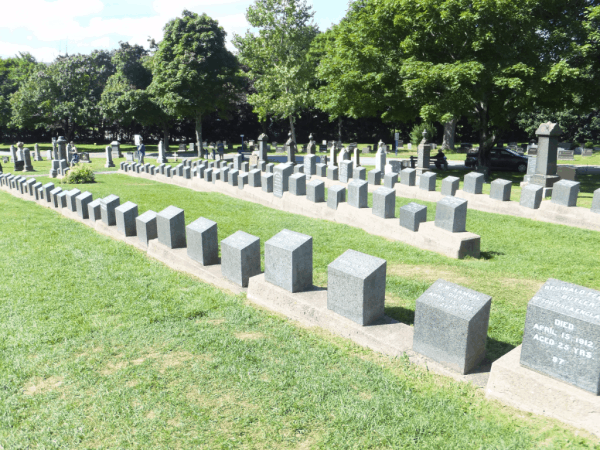
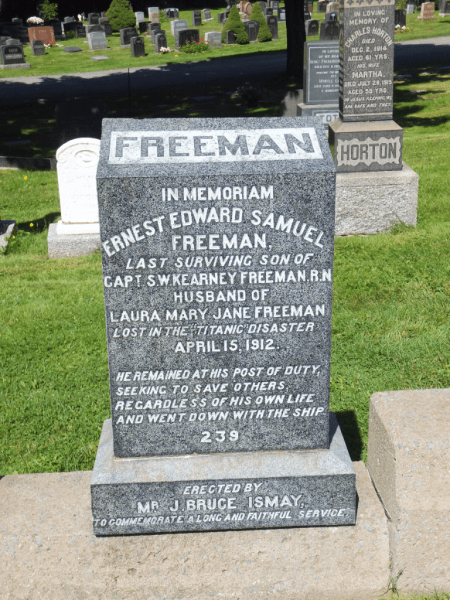
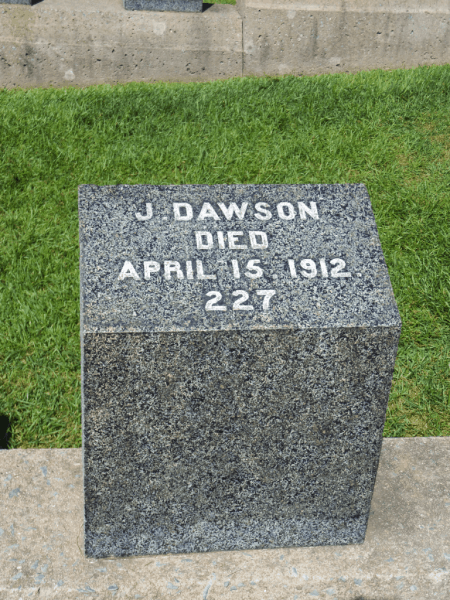
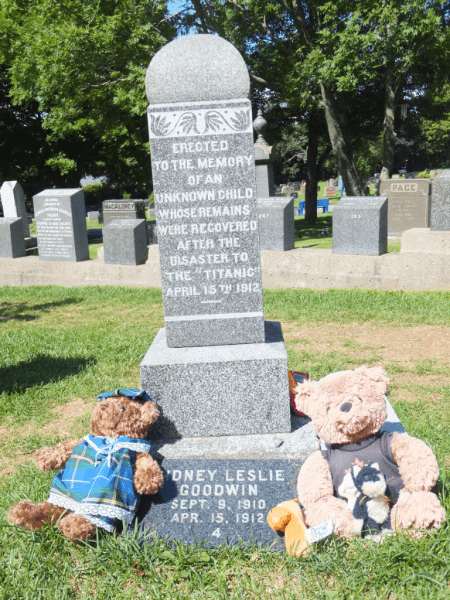
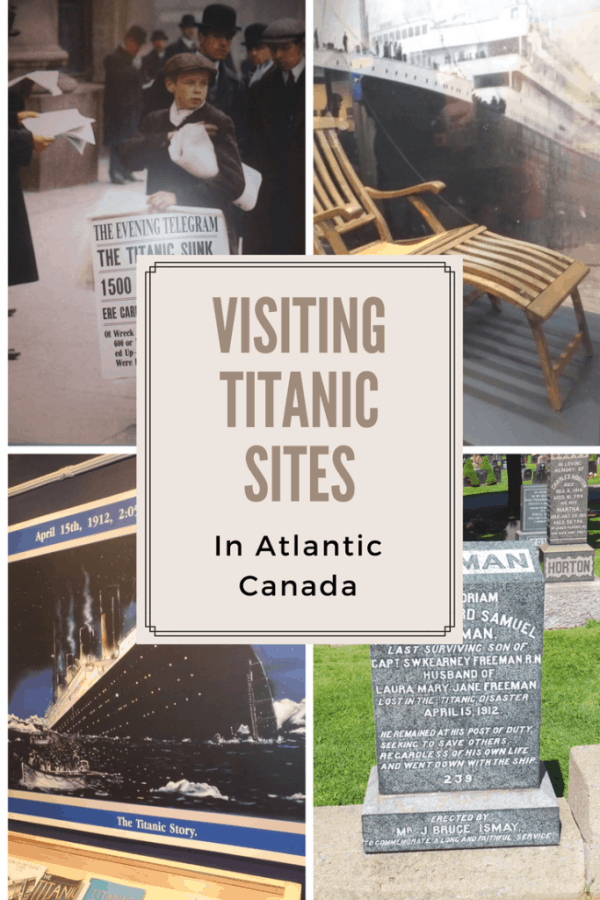
Muza-chan
Very interesting museum 🙂
Lisa Goodmurphy
Thanks, Muza-chan!!
Katja
It’s great that kids take an interest in things so far removed from their experience and that you were able to fulfill those interests with great sites to visit.
eileen at FamiliesGo!
interesting. I’m sure local stories related to survivors landing in Canada gives the exhibit a unique angle. We recently wrote about a similar exhibit in Florida.
Michele @ Malaysian Meanders
My 7-year-old daughter is also fascinated by the Titanic after visiting a traveling exhibit in Houston last summer. She’d love to visit these places that you’ve listed. Those tiny shoes are so sad, and I’m impressed that DNA testing can be done on them.
Leigh
I’m amazed at Emma – a kid who seems to loves art galleries and takes notes well before assignments are due. Kudos to her. And kudos to you for a great rundown on the disaster and where we can get up close and personal with the Titanic in Canada.
Debbie Beardsley @ European Travelista
Your daughter must have been so excited to sit in that chair! Very interesting article on the Titanic. I’d go by the J. Dawes grave too.
Steve
Emma needs to come over here and talk to my girls. Their report is due next week. They’ve just about gotten around to narrowing down their choice of topics.
Great collection of information on the Titanic. Fascinating way to spend a couple of days.
jan
How wonderful that Emma planned ahead what her topic was going to be and you as a family were able to visit these sights. The cemetery in Halifax would be a moving but interesting place. I would love a deck chair replica in my back yard.
Nancie
You’ve made me homesick 🙂 I always visit the Titanic graves when I’m in Halifax. I remember when the movie was released and Halifax became very popular. There was even a suggestion that the city should start charging admission to the “Titanic” cemeteries. Thankfully, that suggestion went over like a lead balloon!
Lisa Goodmurphy
Thanks, Katja – As much as possible, I try to encourage the kids to pursue their interests – they retain so much more when it’s a subject that they have decided to learn about. Emma, in particular, is such an enthusiastic learner that I hope she never loses that desire to just know everything!
Lisa Goodmurphy
I didn’t know that there was a Titanic exhibit in Florida – will check out your post!
Lisa Goodmurphy
It’s funny how young girls are so fascinated by this story! It’s heart-wrenching to see those shoes and the photo of the baby they belonged to. He and his family were 3rd class passengers emigrating to America with high hopes for their future and they all perished that night.
Lisa Goodmurphy
Thanks, Leigh – Emma loves to learn and I hope that she never loses her enthusiasm!
Lisa Goodmurphy
I know that Emma’s approach isn’t exactly the norm – not a week goes by that Katie doesn’t tell her that she’s weird because she is so excited about some homework assignment or another! 🙂
Lisa Goodmurphy
Thanks, Debbie – yes, Emma was quite happy to pose on the chair!
Lisa Goodmurphy
Emma has always been a planner! The museums that we visited and the cemetery were all very moving – learning more of the details about the disaster, one can’t help but be horrified by what happened.
Lisa Goodmurphy
I can’t believe that someone suggested charging admission to the cemeteries – thankfully reason prevailed!
Jessica
I love Titanic History! I’m not a big fan of the movie-too much sap-but I love the history.
Mary {The World Is A Book}
I love Emma’s enthusiasm and eagerness to learn. This is all so fascinating and eye opening. I didn’t know there was such a connection with Eastern Canada. We briefly saw a small exhibit when it was here in San Diego and we loved it. That deck replica looks neat and those shoes are heartbreaking.
Lisa Goodmurphy
I’m not a huge fan of the movie either, Jessica – and the true stories are far more fascinating than the Hollywood version!
InsideJourneys
Though there’s so much information out there on the Titanic, there’s always something else to learn. I didn’t realize this museum existed or that there was a connection to NL. Thanks for sharing!
Danielle (Bubs on the Move)
I love the perspective from a history buff. There was a fascinating display on the Titanic at during a recent visit to the Australian National Maritime Museum in Sydney. Unfortunatley my children were too young to enjoy it, and to let me pay it the attention it deserved. I will have to wait perhaps till they are 9!
Sonja
Don’t you just love it when you can tie in travel with learning? Well, I mean, traveling is always learning, but sometimes it’s fun to make the textbooks come alive for kids, to take them somewhere they’ve read or heard about. Good stuff!
Amy
I totally agree! I just hope my kids can experience history like Emma! What a great education, to experience history rather than simply read about it.
Lisa Goodmurphy
The shoes are heartbreaking, Mary, and even more so after reading the story about the man who couldn’t bear to see them burned and tucked them away safely in a drawer for decades. I learned that an important part of this story is the effect that it had on the men who were tasked with recovering the bodies of victims.
Jessyca
Very informative. I am planning a visit to these sites August 2016.